LEGEND MAX™ Free Active TGF-b1 ELISA Kit with Pre-coated Plates 5 Pre-coated Plates
Transforming growth factor beta 1 (TGF-β1) is a member of the transforming growth factor beta superfamily of cytokines. TGF-ß1 precursor contains 390 amino acids with an N-terminal signal peptide of 29 amino acids required for secretion from a cell, a 249 amino acids pro-region ( latency associated peptide or LAP), and a 112 amino acids C-terminal region that becomes the active TGF-β1 upon activation.
Both LAP and TGF-ß1 exist as homodimers in circulation, but the disulfide linked homodimers of LAP and TGF-β1 remain non-covalently associated, forming the small latent TGF-β1 complex (SLC, 100 kD). The large latent TGF-β1 Complex (LLC, 235 – 260 kD) contains a third component, the latent TGF-β binding protein (LTBP), which is linked to LAP by a single disulfide bond. The LTBP does not confer latency, but for efficient secretion of the complex to extracellular sites. Free active TGF-β1 can be released (activated) by many factors including enzymes and low or high pH.
TGF-β1 is nearly 100% conserved across mammalian species. It has diverse biological functions in multiple cellular processes such as regulating proliferation and differentiation of various cell types. TGF-ß1 is also an important immunoregulatory cytokine, which is involved in the maintenance of self-tolerance, Th17 differentiation, and T cell homeostasis etc.
It is expected that normal serum, plasma, or other biological fluid contains low concentration of free active TGF-β1 and high concentration of Latent TGF-β1. It is the free active form TGF-ß1 that binds TGF-ß receptor and exerts biological functions. However, it has been difficult to quantify the free active TGF-ß1 because of insufficient sensitivities of most assay products currently available on the market. It is necessary to measure both the free active form and total TGF-ß1 in biological samples to understand the TGF-ß1 functions.
- Reactivity
- Mouse, Human, Rat, Porcine, NHP
- Application
ELISA
- Application References
(PubMed link indicates BioLegend citation)
- Tucker, TA., et al. 2011. Am J. Respir Cell Mol Biol. 46:173. PubMed
- Andreade BB, et al. 2013. J Infect Dis. 207:1379. PubMed
- Wen L, et al. 2014. PLoS One. 9:101841. PubMed
- Kemter AM, et al. 2015. Life Sci. 15:129. PubMed
- Tucker T, et al. 2012. Am J Respir Cell Mol Biol. 118:2784. PubMed
- Andrade B, et al. 2013. J Infect Dis. 207:1379. PubMed
- Wen L, et al. 2014. PLoS One. 9:101841. PubMed
- Kemter A, et al. 2015. Life Sci. 15:129. PubMed
- Smith C, et al. 2015. Cell Rep. 13:1137-48. PubMed
- Lefebvre J, et al. 2016. Sci Rep. 6: 25051. PubMed
- McInerney-Leo A, et al. 2016. J Med Genet. 53: 457 – 464. PubMed
- Lawson J, et al. 2016. Vet J. 214:1-6. PubMed
- Takeshima T, et al. 2016. Proc Natl Acad Sci U S A. 113: 11300 – 11305. PubMed
- Sensitivity
- 2.3 pg/mL
- Standard Range
- 7.8-500 pg/mL
- Materials Not Included
- Microplate reader able to measure absorbance at 450 nm
- Adjustable pipettes to measure volumes ranging from 1 µL to 1,000 µL
- Deionized water
- Wash bottle or automated microplate washer
- Log-Log graph paper or software for data analysis
- Tubes to prepare standard dilutions
- Timer
- Plate Shaker
- Polypropylene vials
- Kit Contents
- Anti-TGF-β1 Pre-coated 96-well Strip microplate
- TGF-β1 Detection Antibody
- TGF-β1 Standard
- Avidin-HRP D
- Assay Buffer C
- Wash Buffer (20X)
- Substrate Solution F
- Stop Solution
- Plate Sealers
- Cell Sources
- Many cell types, highly expressed on activated Tregs and platelets
- Gene ID
- 21803View all products for this Gene ID
- UniProt
- View information about TGF-beta1 on UniProt.org

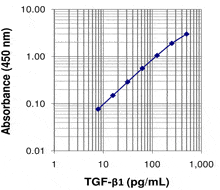
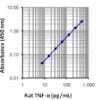
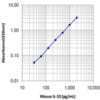
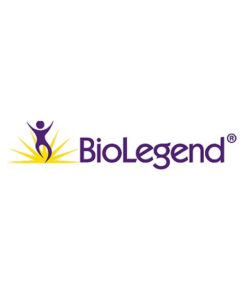
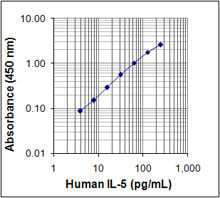
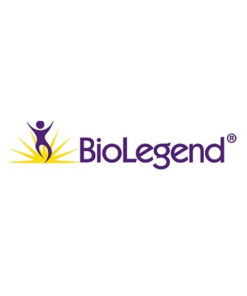
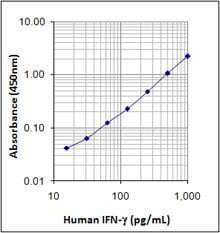
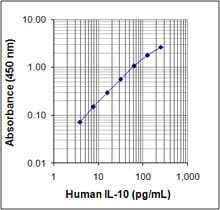
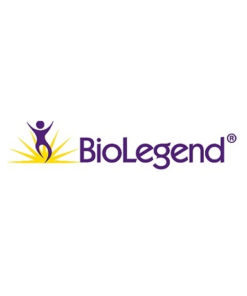
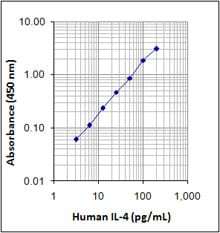
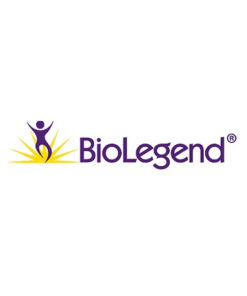
Reviews
There are no reviews yet.